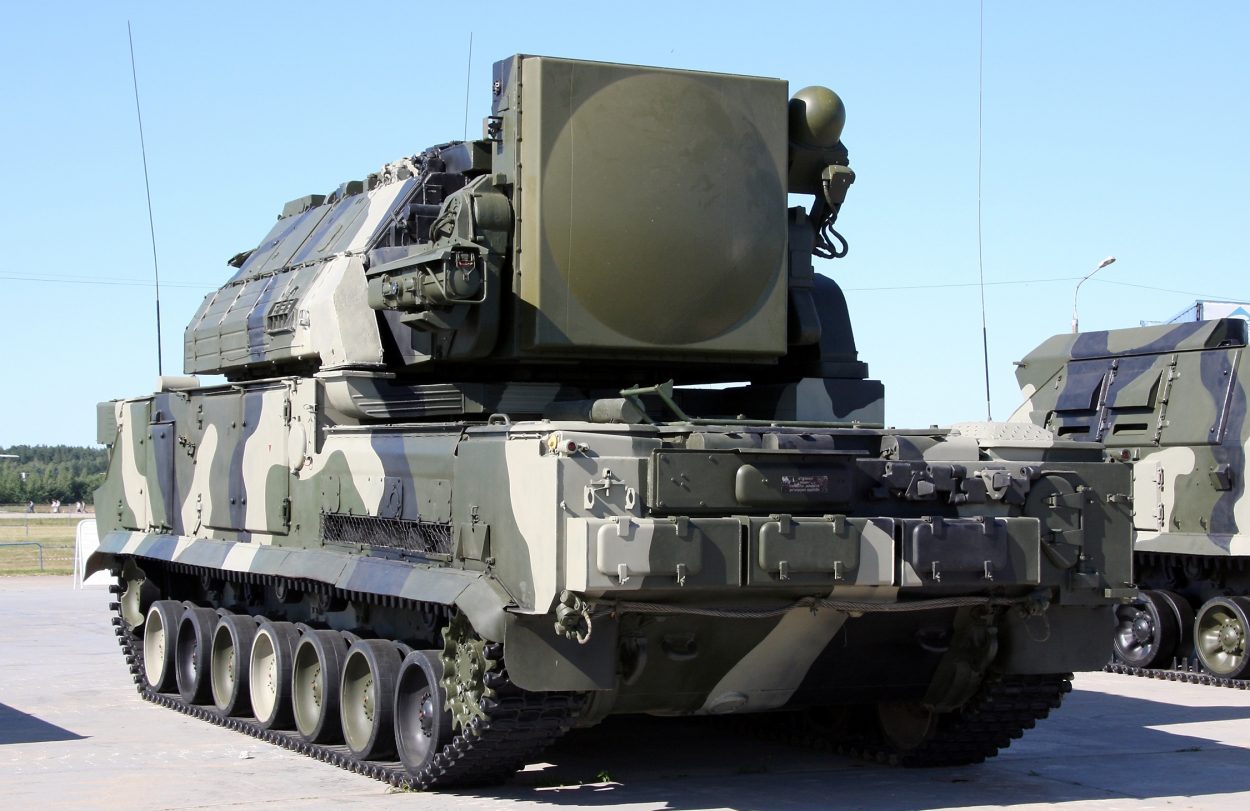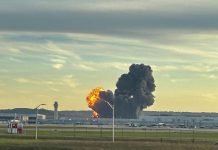Social media is flooded with drone footage from the ongoing Ukraine war, showing tanks, convoy vehicles, ammunition storage facilities, and other military targets from the Ukrainian and Russia being attacked or destroyed.
However, this week, incredible drone footage has surfaced depicting a drone’s own destruction by a Russian surface-to-air missile.
The Facebook account of the 45th Independent Artillery Brigade of the Ukrainian Army released a video on June 5 of an unmanned aerial vehicle (UAV) on a targeted mission.
While the time and place of the recording were not disclosed, unverified Russian-language media reports suggest that the video was recorded near the town of Pologi in the Zaporizhzhia region.
The drone was on a mission to destroy Russian fuel and weapons depots when Russian troops shot it down.
?️Russian missile hit a drone of Ukrainian 45th Artillery Brigade in the south. #UkraineRussiaWar pic.twitter.com/IV6hnd1NZV
— MilitaryLand.net (@Militarylandnet) June 5, 2022
In the video, the Ukrainian UAV spotted a couple of Russian trucks with the letter Z on the roof lined up at a factory and oil depot. While the UAV can be seen hovering over an open field when at a distance a white plume of smoke arises.
The rocket swerves and turns as it homes in on the drone, destroying it eventually and causing the recording to cut out.
Despite the loss of the UAV, the Ukrainian 45th Independent Artillery Brigade said it was successful in its attack on the Russian depot. The brigade used two drones to carry out the strike, with one being shot down by the enemy in return fire.
However, that was after the drone had destroyed the Russian military targets, inflicting heavy damage on the facility. Video captured by another UAV shows the factory after the shelling that burned many Russian motor vehicles.

TOR Air Defense System
The missile in the video appears to be vertically launched, based on which reports suggest it might have been launched from the Tor air defense system.
The Tor missile system, known in the West as SA-15 or Gauntlet, was originally developed by the Soviet Union for short-range air defense purposes. Development of this surface-to-air missile (SAM) system commenced in 1975 and it entered service with the Soviet Army in 1986.
Its main goal was to shoot down air-launched cruise missiles; however, it is also effective against helicopters, planes, other missiles, and UAVs. The Tor can also detect and intercept anti-radiation missiles.
This air defense system uses 9M330 missiles and has radio command guidance. With a maximum range of 5-12 km, it can reach an altitude of 4-6 km, depending on the target speed.
The kill probability of Tor with a single missile is said to be 26-75% against aircraft, 50-88% against helicopters, and 85-95% against UAVs, however, this figure also depends on the target altitude. The higher the target, the more like it is to be hit.
Tor’s radar detects aircraft at a range of 25-27 km, helicopters at a range of 12 km, and UAVs at a range of 9-15 km. The tracking range is about 20 km. The system can search for targets while on the move. Also, the Tor system has a brief reaction time, of only 8-12 seconds from target detection to launch.
Numerous TOR Systems Destroyed By Drones
That said, there can be numerous videos found on social media, of Tor SAM batteries being destroyed by Ukrainian drones, particularly the Turkish-made Bayraktar drones.
For example, in early May, the Ukrainian Bayraktar TB2s conducted a series of attacks over the Snake Island to destroy multiple Tor systems to make it safe for the famous bombing raid carried out by two Su-27s on the island that took place later.
Ukraine's Bayraktar TB2 UCAV strike hitting a Russian Tor SAM system on the Zmiinyi Island. pic.twitter.com/FOUIiWWMtg
— Status-6 (@Archer83Able) May 6, 2022
However, the drone currently in question appears to be much smaller in size, meant only to guide artillery strikes, unlike Bayraktar, which can be used for attack purposes and intelligence, surveillance, and reconnaissance (ISR) missions.
Ukraine has deployed a variety of light and small-sized UAVs to deal with the Russian military campaign, such as the US model RQ-20 Puma, a small, battery-powered, hand-launched unmanned aircraft system produced by AeroVironment based in California. Its primary mission is surveillance and intelligence gathering using an electro-optical and infrared camera.
Valerii Iakovenko, the founder of Ukrainian drone company DroneUA, estimates that Ukrainian forces are operating more than 6,000 drones for reconnaissance and says these can link up with Elon Musk’s Starlink satellite systems to upload footage.
- Contact the author at tanmaykadam700@gmail.com
- Follow EurAsian Times on Google News




